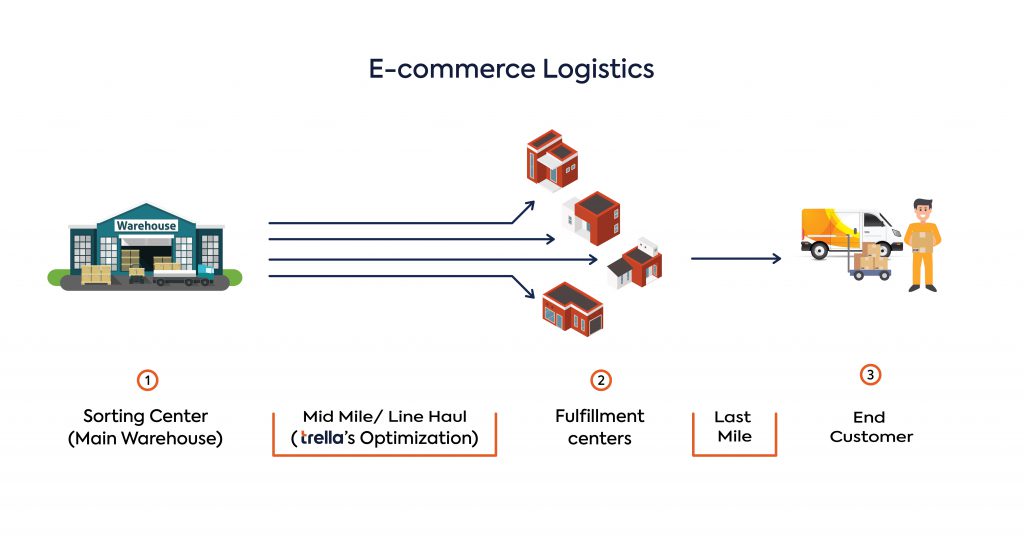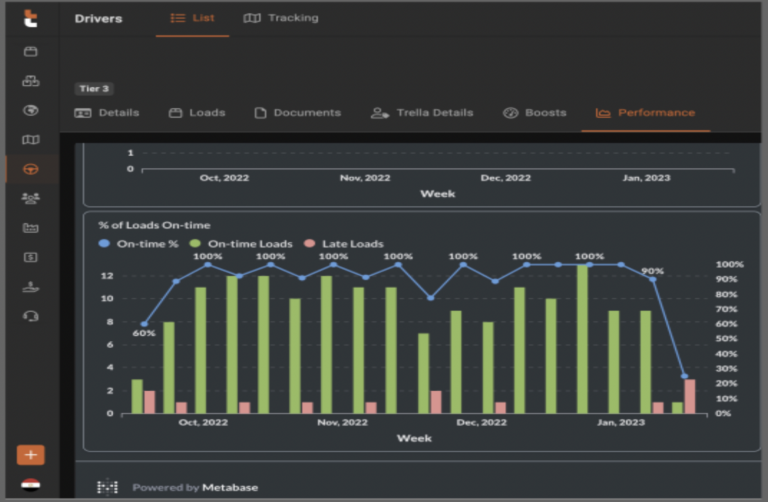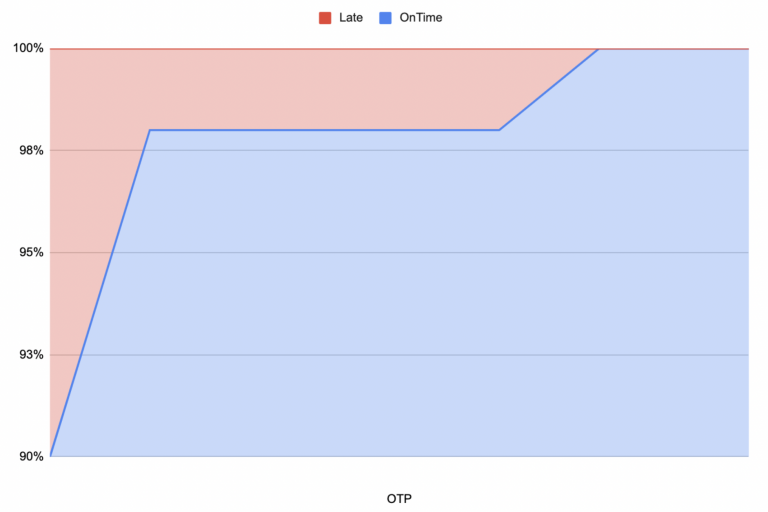E-Commerce Industry Overview
The e-commerce industry has become an important part of the global economy and is expected to continue growing in the future, as it has altered the way people shop, making it more convenient and accessible. The COVID-19 pandemic has also accelerated the growth of the e-commerce industry as more people started shopping online to avoid physical stores. That growth in the industry has led to an expansion in the competition. One of the most dangerous weaknesses of many companies is their inability to deliver their products to the end customer at the promised time, which can and will affect the overall customer satisfaction.
E-Commerce Logistics Overview
E-commerce logistics is the backbone of the e-commerce industry. It involves the movement of goods from the seller to the buyer. The e-commerce logistics cycle starts with order placement and ends with delivery to the customer. The logistics cycle involves several steps, including order processing, inventory management, packaging, transportation, and delivery.
The diagram below shows the e-commerce logistics process in a simple manner:

1- Sorting Center: The process starts at a main warehouse or a sorting system which stores thousands of items and packages
Mid-Mile / Line Haul: This is a stage where the packages from the main warehouse are transported to several fulfillment centers in different locations based on the final destination of the delivery.
2- Fulfillment Centers: These centers are located in several locations where the packages are stored and then transported as batches to different geographical locations to the end customers.
Last Mile: This is the final stage of package transportation for the end customers.
3- End Customer: The customer that ordered the package.
Amazon Egypt
Amazon is a global e-commerce giant that has set high standards for logistics providers in Egypt. Amazon has strict requirements for on-time delivery, shipment visibility, and reliability.
Trella & Amazon
Trella has its own standard flexible model that maximizes transparency, visibility, and control over the logistics process, ensuring on-time deliveries and reliability. As mentioned above, the e-commerce industry is all about the end customer. Trella relates to this as we always adapt to ensure customer satisfaction. In the following segment, we will dive deep into how Trella managed to tailor and constantly apply changes to its model to accommodate Amazon's vision and standards.
Adapting to Shipper's Requirements
In the early months, Trella was providing to Amazon an On-time-performance of 98% - a figure which was well within Trella’s green range. However, what we learned through feedback is that 98% is simply not good enough for Amazon, as a miss on these critical mid-mile moves can cost a huge number of end-customer delays. (1 late load ~ 1000 failed customer promises)
Once we looked at it that way, Everything changed!
Trella worked on enhancing its operations to meet Amazon's requirements at any cost. This started with taking constant feedback from Amazon, understanding the root causes of failures, implementing corrective actions, and constantly iterating on how we deliver our service to Amazon to make sure we are enabling not only our customers’ satisfaction but also our customer’s customers’ satisfaction
With this approach and through collaboration from all stakeholders and teams, we raised the bar of performance and have maintained a 100% OTP record for over 3 months now.
Here is the how:
Trella’s Control Tower and Visibility
Trella installed GPS devices on the trucks working with Amazon to ensure accurate and reliable load tracking. GPS enables more accurate live tracking (than standard app tracking), and there’s also a geofencing piece that automates the load status updates and decreases our internal touchpoints within our CT. CT is Trella’s control tower, which acts as the focal point between the shipper and the carrier, reducing touchpoints, delivering a high first response rate, and short issue resolution time.
Carrier Scoring & Performance Management
Trella utilizes its vetted supply and huge capacity to create internal competition that raises the level of performance. This is our “Carrier Scoring” methodology, where we can identify which of our drivers are best when it comes to arriving on time and which are worse. This helps us incentivize, penalize, and overall provide better supply to our customers.

Learnings:
Although the Mid-Mile is less challenging to optimize as it is quite straightforward, the impact of defects in the mid-mile is huge when it comes to customer satisfaction.
Being late in One critical Mid-Mile load may affect more than 1000 failed customer promises as the truck will be carrying a large number of packages. That is why Trella has a 100% Target set for this kind of operation to ensure our shipper partners are empowered to deliver on customer satisfaction.

E-commerce’s linehaul/mid-mile is key to ensuring customer satisfaction through On Time Delivery (OTD)
- Complete Load Visibility100%
- Performance Management100%
- Customer Satisfation100%
